This tiny Central American country has the highest caliber eco-adventures in its parks and nature preserves. Zipline through the jungle, ride horses to hot springs and raft down the famous Picuare. Plus Celebration Travel Guide Ecotourism: Costa Rica.
by Donna Peck
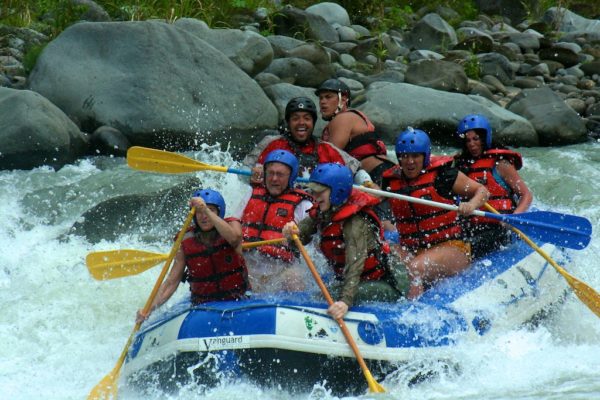
Celebrating a special occasion in Costa Rica with friends means having countless adventures at the snap of your fingers. No where else does such a range of thrills exist, requiring little more than average fitness and, take note, no fear of heights.
This tiny Central American country has a higher proportion of territory dedicated to parks and nature preserves than any other place in the world. High times await the celebration traveler amid Costa Rica’s dense forests and unspoiled rivers.
The plan is simple. Hit a peak with one experience, then go on to the next. Canopy tours, horseback rides, hot springs, rainforest hikes, waterfall rappelling, white water rafting each has its own best site. The highest caliber eco-adventures cluster on the Pacific side and the Caribbean side.
Costa Rica On The Pacific Side
Once you’ve conquered the crater-sized potholes on the rutted road, Rincón de la Vieja National Park emerges from the wilderness. Within its boundary a sprawling ranch surrounds a Guanacaste hacienda: our hub for three days of thrills in the jungle, on the river, and in the hot springs.
Airborne in the forest
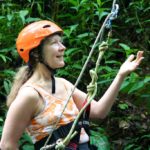
Wearing harnesses and clips, we climbed the metal staircase into the forest canopy over the Blanco River. The others before us clipped onto the zip line and stepped off the platform. Soaring the length of the canyon puts a new spin on sightseeing. After the initial fear, the sensation of elation takes hold, so much so you can’t get enough.
Not only zip lining, but rock climbing, rappelling, rope swings and the finale—Via Ferrata, the upside down drop—transported us from one platform to the next throughout the canyon.
Blasting off
Washing off the grime before we got into the inner tubes, we were nearly overpowered by the river’s current. The dark churning water and rocky river bed threatened to make mincemeat of our fragile tubes. Did I have the strength to hold myself in? Our tubes took a thrashing in the chutes and the class III rapids. I felt like a rag doll in a washing machine. Back on solid land, I was bruised but jubilant.
With the Sabaneros
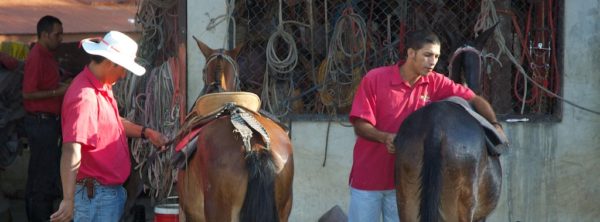
At the Guachipelín stable, I received the advice to look into the eyes of the horse. Does the horse return your gaze with a soft, curious look and large, round eyes? Or small, narrow eyes? Pick a horse that has the former. A chestnut mare regarded me with large open eyes and long lashes. Good choice: she had a gentle gait.
Riding with the Sabaneros, I envied the cowboys’ easy intimacy with their horses as they led a dozen riders down a dusty road under the steamy eye of the Rincon de la Vieja volcano, a 6,217-foot cinder cone volcano.
Hitching our horses outside a solid wall of foliage, the cowboys guided us through a small opening, and down a slippery staircase, giving a hand where needed. The verdant realm at the bottom twitched with life: butterflies, songbirds, ferns, mosses, tall trees and looping vines. A muddy path led to a 100-foot-high waterfall, shooting droplets as if from a water fun. I approached the spray from the side and closed my eyes. All I saw was green.
Looking good in gray gook
To cap the day, we painted our bodies with mud and wallowed in the volcanic springs at Simbiosis Spa. Our afternoon ritual began with smearing chocolaty mud on faces, arms and legs —gently on the bruises—and lying in the sun. Washing off in the stone tubs set into the slope above the river took a leisurely hour. feeling the healing power of the thermal water.
Costa Rica On The Caribbean Side
Being outdoors felt so good, it became a craving. When we arrived in Turrialba in Cartago province, we checked into Espino Blanco Lodge inside a hilltop reserve and went straight to the forest.
Edenesque hike
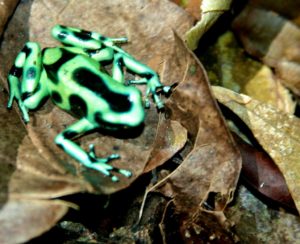
The trail took us up to the largest white thorn trees in Costa Rica. Mist hung in the high canopy. This privately owned tract of rainforest is a biological corridor of virgin rainforest and rare white thorn trees.
A staggering number of bromeliads, ferns, mosses, flowering vines and orchids sprouted on every tree. Swallowtail and banded peacock butterflies darted everywhere. And the tinamou songbird filled the air with an aching sweetness. The air steamed from evaporating rainfall. Moist leaves shimmered a fragile luminescence. Our guide tilted a bromeliad leaf to reveal a tiny tree frog, yellow and black and a half inch long. You need a trained eye to spot such creatures.
The dawn chorus erupted outside our wooden cabin, raised on stilts above the forest floor. I raced to get my recorder. The sound gave new meaning to the word uplifting.
In the waterfall
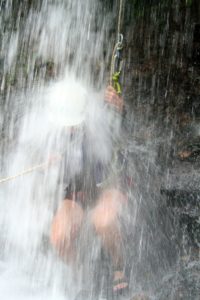
On top of a waterfall a few minutes before our first descent, we faced Massi Devoto, from Explornatura. “This is a baby waterfall, even my grandmother can go down it,” he said, which didn’t ease our fears. Now is not the time to discover a fear of heights. Looking over the edge ratted my nerves.
It was less like rappelling and more like being in the eye of a hurricane, fighting the torrent inch by inch. It was tricky to get a firm foothold on the slippery rock. The Explornatura team held the top line and cheered as each of us collapsed at the bottom. That said, by the forth waterfall, most of us were hopping off at the bottom, high-fiving each other and grinning for the camera.
The physical high of white-water rafting
The Pacuare River, wild and untamed, plunges through steep gorges and unexplored tropical wilderness. A well-known adventure hot spot, the Picuare is the highest and wildest in the rainy season from late May through the end of November.
We spent the entire day on the Picuare, six of us on a raft with one guide in the back steering and another guide helping us paddle. The heart-racing work is in paddling to avoid rocks and obstacles. Some chutes were tricky and difficult but it was all child’s play for the guides who boasted of rafting down waterfalls.
White-water kayakers were out on the Pacuare. We watched Mario Vargas, Costa Rica’s national freestyle champion in a tiny, slipper-shaped kayak, playing inside a wave hole with jaw-dropping skill. He maneuvered in and out of currents with his body and foot pedals. Vargas said that with a few days of instruction and no fear of the water, anyone can roll a kayak and paddle down a class I-II river section.
On our two-day trip with Explornatura, we rafted 14 miles, and camped overnight on a ridge above the river. The tents were on platforms each with its own path and spaced out like a village.
On Coming To The Forest
My advice on any celebration trip is know what puts you in a peak state. Love being outdoors and feeling connected to nature through a physical experience? Costa Rica is obviously for you. Just don’t try to drive the length and breadth of the country. Another draw are the many ecolodges in pristine biospheres. Be it a river or a rainforest, its moods both day and night will affect you.
—photography by Donna Peck and Explornature guides
The author discovered the key to ziplining: hold on tight and watch for the platform.
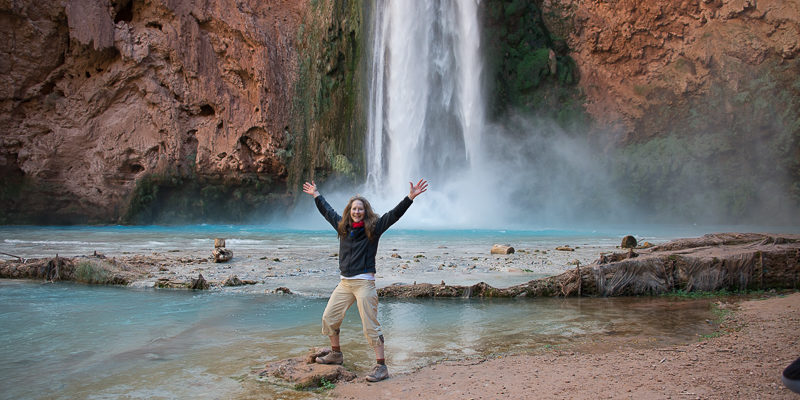
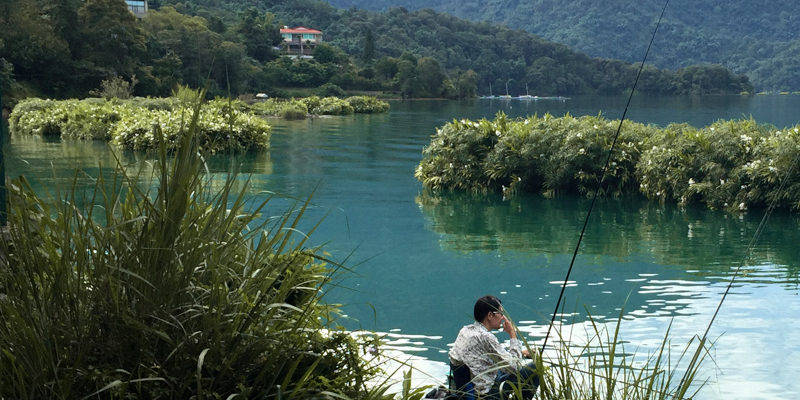
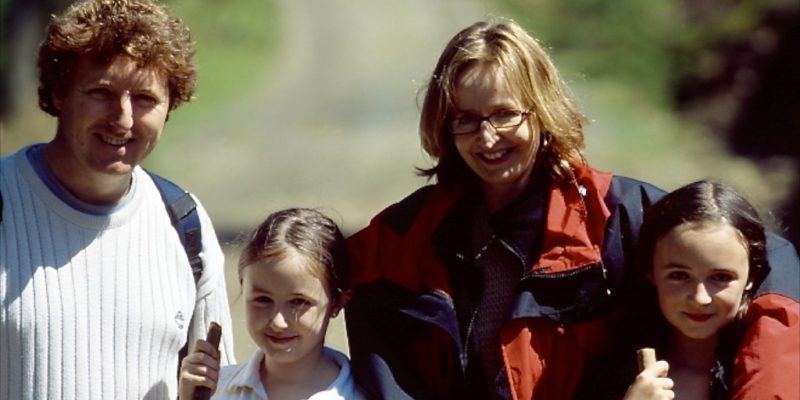

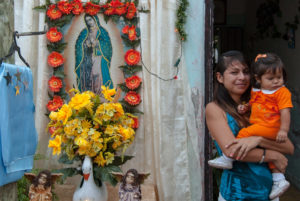
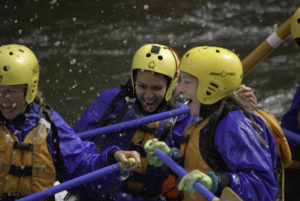
Leave a Reply